How to plant grapes in autumn: planting instructions and care tips
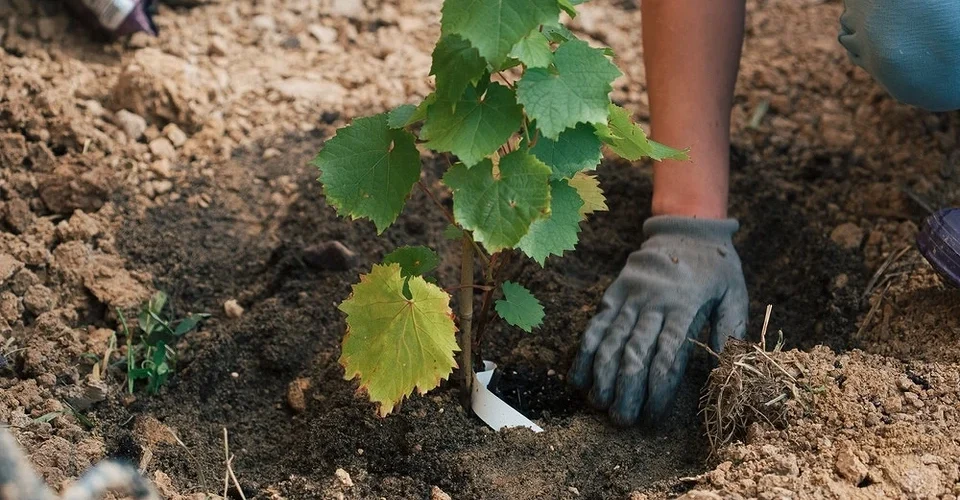
We discuss autumn grape planting. We provide step-by-step instructions for planting grape seedlings and cuttings.
A productive vineyard begins with proper planting. Experienced winegrowers know that competent planting largely determines the subsequent development and yield of the vine. Therefore, they strive to give the plants an appropriate start. Let’s examine how to plant grapes in the fall using seedlings and cuttings.
How to determine planting times
Autumn planting is very favorable for planting material. By this time, it has finished its growing season. This means that nutrients are concentrated in the root system. Therefore, adaptation to a new location is faster and easier. Seedlings that have overwintered start growing earlier than those planted in spring. In autumn, the soil mixture is usually saturated with moisture, which is favorable for the adaptation of young plants. Another advantage of autumn planting is the wide selection of available planting material.
It is essential to determine the correct timing for planting. Planting too early is undesirable. The buds of young plants may start to grow, and then they will die. Planting too late is also detrimental. The seedling will not have time to take root, and the first frost will kill it. According to the rules, there should be at least three weeks between planting and the arrival of frost. Experienced winegrowers believe that the time for planting is when daytime temperatures do not fall below 5°C and do not rise above 15°C. On average, in cold regions, planting begins in late August-September; in temperate areas, in September-October; and in warm regions, in October-November.
Important. When choosing planting dates, do not forget about the long-term weather forecast and follow the recommendations of weather forecasters.
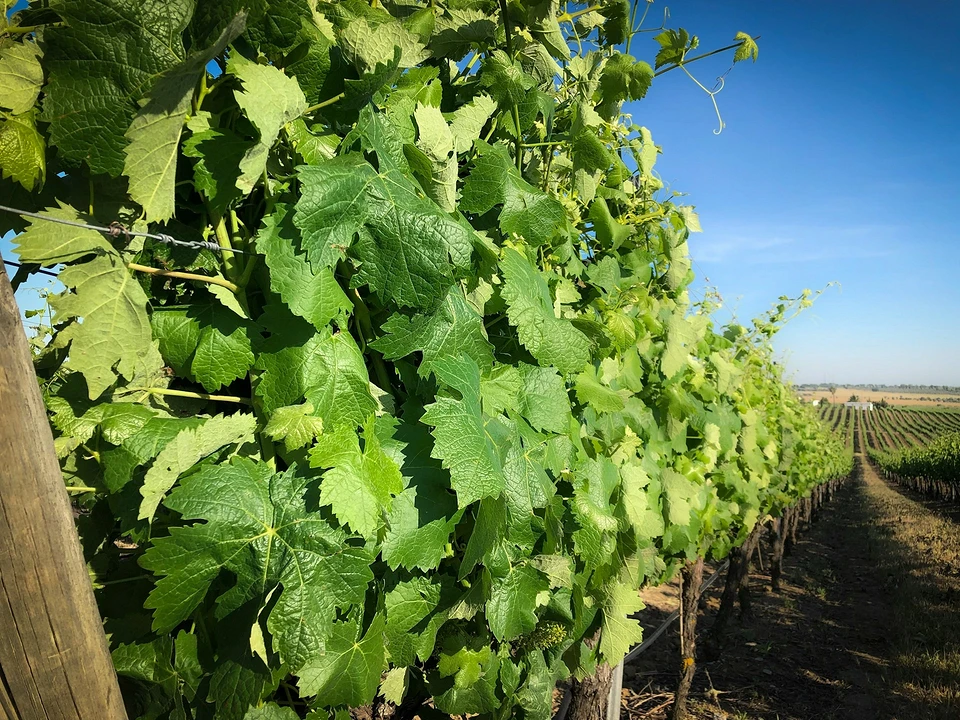
Choosing a location
The homeland of grapes is considered to be the Near East, so they love warmth and good lighting. The vine may survive in cool, shaded conditions, but it will not produce tasty berries, and the yield will be very low. Therefore, a sunny location is chosen for grape bushes. The south wall of a fence, house, or other structure is considered an ideal placement choice. Here, the sun’s rays will reflect off the vertical surface, providing the plant with additional light and increasing the amount of heat.
Vines grow well on south-facing slopes. Snow melts earlier on these slopes, and the soil warms up faster. If there are no such areas, you can choose a place for planting that is well-lit throughout the day and sheltered from cold winds. Vines cannot tolerate stagnant moisture, so they should not be planted in low-lying areas or swampy areas. It grows best on hills or well-drained soils. The soil mixture should be light and fertile. The vine does not grow on heavy, dense soils.
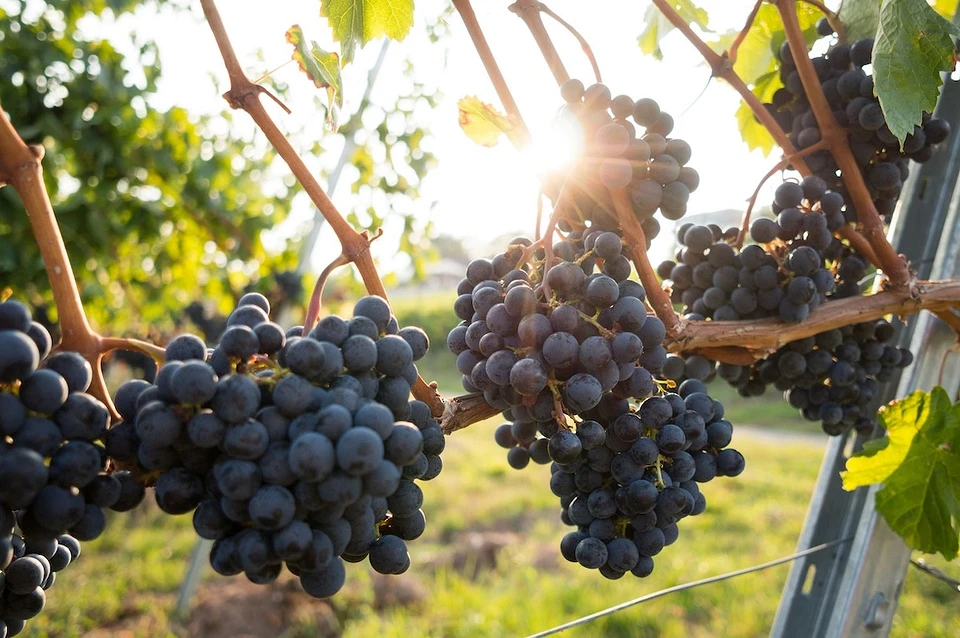
How to choose seedlings
Special attention should be paid to the choice of planting material. First of all, could you clarify the characteristics of the variety you like? It must be regionalized, i.e., adapted to local climatic conditions. Even with reasonable care, non-regionalized varieties do not take root well, grow slowly, and often fail to thrive. Even if the vine survives, the yield and quality of the berries will be far from the declared varietal characteristics.
For autumn planting, seedlings that have been rooted since last year or since spring are most often chosen. During the growth period, they have developed a sufficient root system and formed vigorous shoots with leaves and buds. Let’s list the characteristics of a seedling suitable for planting.
- The presence of a one-year-old shoot, length depending on the characteristics of the variety, from 10 to 20 cm.
- A well-developed root system, with three to six long primary roots.
- Leaf plates of regular shape, bright green in color.
- Presence of healthy buds. There should be at least 4, but preferably 5 or 6.
- The seedling should show no signs of disease or damage. The bark is uniform brown, without cracks, spots, or other defects.
Tip. If you plan to plant rooted cuttings yourself, dig them up no earlier than a day or two before planting. Otherwise, the roots may dry out.
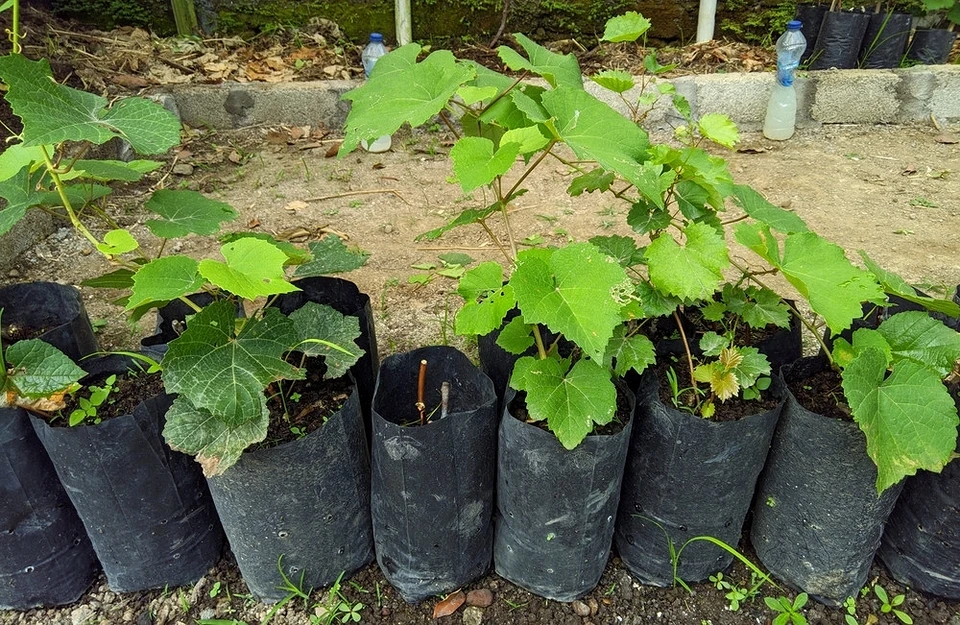
Preparing planting holes
Proper planting of grapes in open ground in the fall requires careful preparation of the soil mixture. Please start preparing the planting holes at least one and a half to two weeks before planting, preferably even earlier. This is necessary to allow the soil to settle. Otherwise, after planting, the loose substrate will settle significantly, and the young bush will “drown” in it. Preparation begins with digging planting holes. They can be round or square. The average size is 31.5 x 31.5 x 31.5 inches. If the soil is dense and heavy enough, it is better to increase all dimensions to 39.37 inches.
During digging, the fertile top layer of soil mixture is set aside for later use. The infertile layers are removed. Drainage is laid at the bottom of the prepared pits. This can be broken bricks, ceramics, or coarse gravel. Some winegrowers place a plastic pipe with a diameter of 2.76 to 3.94 inches on top of the drainage. Its upper edge should protrude 5.91-7.9 inches above the ground. This pipe is very convenient for watering the vines and supplying liquid fertilizer to the root system.
After that, humus or compost is laid on top of the drainage layer. Fill about a quarter of the pit with organic matter. Then cover it with a small layer of previously removed fertile soil. Leave the pit in this state for one and a half to two weeks, or better yet, three weeks, to allow the soil mixture to settle. You can immediately prepare the substrate for backfilling and remove it before starting planting. To prepare it, mix the following ingredients.
- Fertile soil mixture from a pit or purchased universal soil — 3 parts.
- Washed river sand — 1 part.
- Compost or humus — 1 part.
- Ash powder — 1 liter for the entire pit.
- Complex fertilizer, such as Organic Mix Autumn, Om for grapes, etc. The dosage is indicated on the package.
Mix the ingredients thoroughly until you have a smooth, loose mixture.
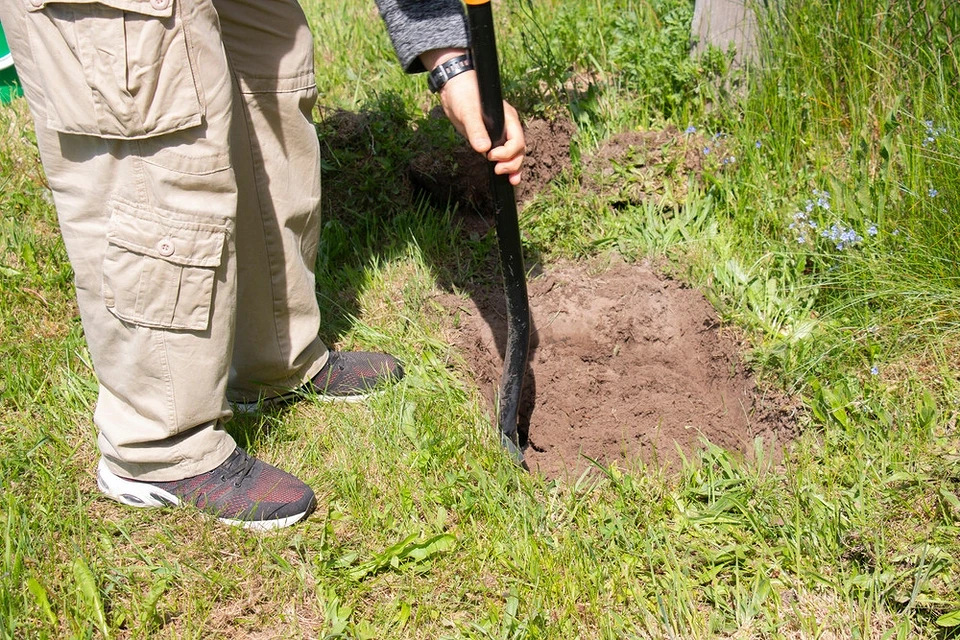
Step-by-step instructions on how to plant grape seedlings in autumn
Plants with open roots need to be prepared for planting. To do this, place the roots in a container of water for an hour or two. You can add any growth stimulant to the water, such as humate. Plants with closed roots do not need to be prepared for planting. The technology for planting grape seedlings in autumn is as follows.
- In the center of the prepared planting hole, make a mound with the prepared backfill.
- Place the seedling with the root ball on top of the mound, carefully spreading the roots along the slopes. They should not be tangled or bent. Carefully remove the plant with the root ball from the container along with the soil clod. Could you place it directly on top of the mound?
- Fill the hole halfway with backfill, holding the trunk with your hand. Carefully compact the soil mixture. Water generously.
- Check the planting depth. If the plant is too deep, could you pull it up? In general, after filling the hole, the heel of the seedling, i.e., the area from which the roots extend, should be buried 13.8-15.8 inches deep, and the base of the growth should be 3.9-5.9 inches deep.
- Fill the hole, compact the soil, and water again.
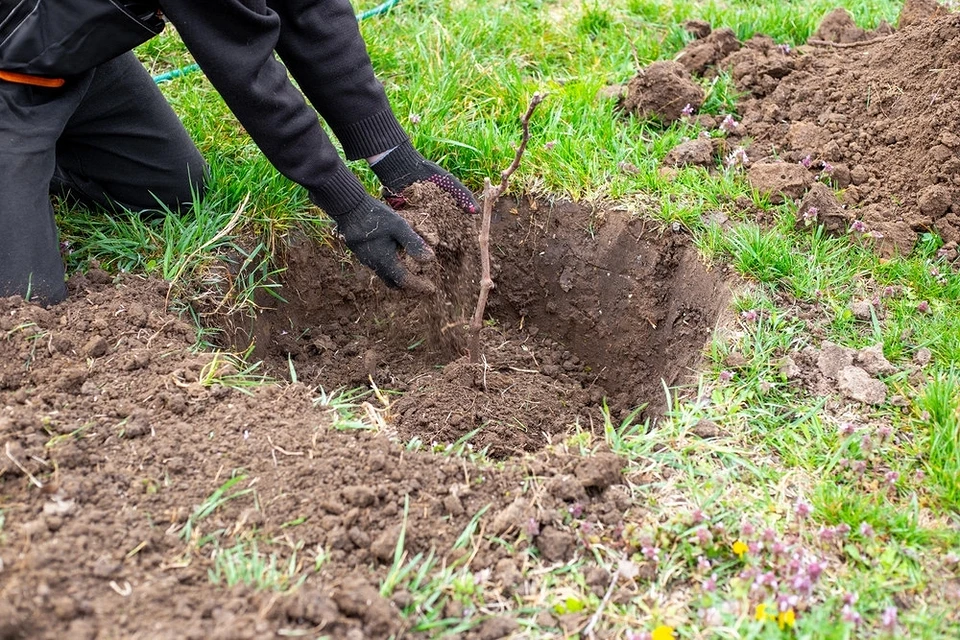
Caring for planted seedlings
Caring for seedlings after autumn planting is not difficult. The soil mixture usually contains enough moisture for the plants to adapt normally. Watering is required if the soil is dry and the weather is arid. In this case, the seedlings are watered once a week or every other week. This is done until the cold weather arrives. After watering, it is advisable to loosen the soil so that it does not compact. Or mulch it. Some winegrowers begin to form the vines and prune them. This is done two to three weeks after planting. With the onset of cold weather, young grapes need to be covered for the winter. The type of cover depends on the growing zone. In warm areas, it is sufficient to cover the bush with agrofibre or foliage. In cold regions, the vines are laid in trenches or wrapped in tarpaulin or roofing material, then covered with sawdust or earth.
Features of planting grape cuttings in autumn
It is believed that cuttings take root in spring. They are cut in autumn, stored throughout the winter, and then rooted. Not everyone knows that grape cuttings, also known as shoots, can be planted in autumn. Planting material is cut only from fruiting vines. This is done after leaf fall, preferably immediately after the first frost. It will harden the plant. The diameter of the shoot should be at least 0.4 inches, and the length should be up to 39 inches. The vine from which the cutting is taken should be mature. The middle part of the vine is cut, where there are several live buds.
Cut with a sharp, disinfected blade. Make a straight cut at the bottom just below the bud and a slanted cut at the top 0.8-1.2 inches above the bud. Before planting, the cuttings must be prepared. To do this, dip the upper cut in melted paraffin and the lower cut in a root formation stimulant solution, keeping them there for a day. After that, could you go ahead with planting?
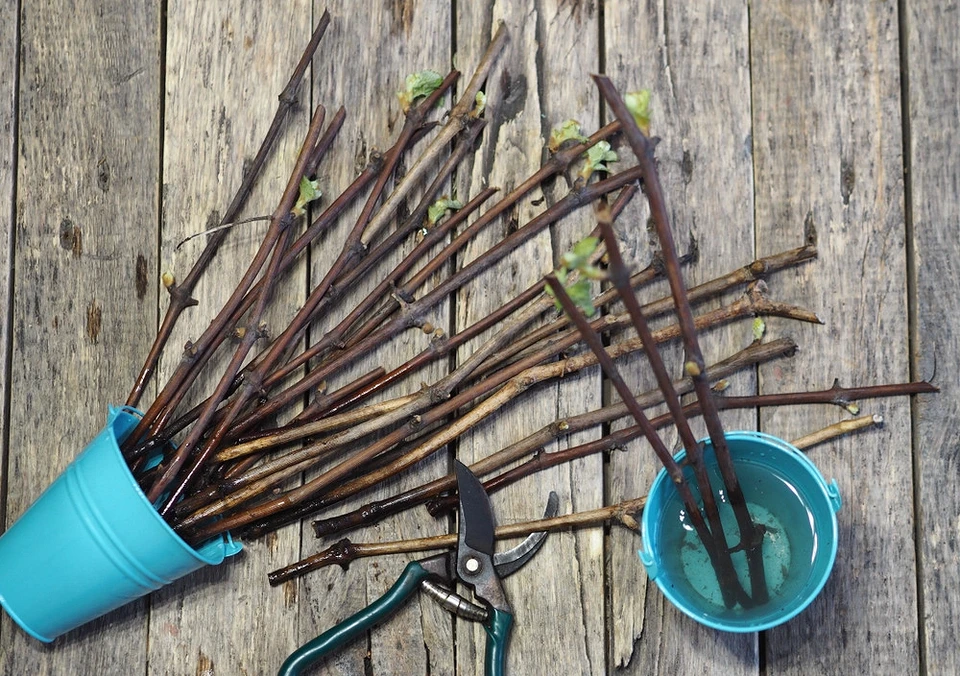
The instructions for planting grape cuttings in the fall are simple.
- The soil mixture is dug up and leveled. The cuttings are inserted into the soil at a 45° angle so that the top is facing south. This is done carefully so as not to damage the buds. Two of them should be in the ground, at least one on the surface.
- The cuttings are planted 4 inches apart, with 12 inches between rows. Sprinkle 2-3 inches of soil mixture over the plantings.
- After that, cover the cuttings with polyethylene, securing it at the edges. Cover with a layer of foliage or soil, cover with burlap or rags, and add another layer of polyethylene on top. The thickness of the cover depends on the growing area.
The cuttings will overwinter well in the resulting greenhouse and start growing in early spring. You need to remove the cover in time so that they don’t rot.
❓ Questions and answers
How do you prepare the soil before planting grapes in the fall?
You need to dig the planting hole in advance, 1-2 weeks before planting, and add drainage (coarse gravel, ceramics), organic matter (compost or humus), sand, universal fertile soil, and calcined ash. Allow this mixture to settle so that there are no gaps when planting later.
How to care for a young vineyard after planting in the fall?
Care includes regular watering in dry weather until frost, loosening the soil, mulching, pruning if necessary, and preparing for winter — covering in cold regions.
How does planting cuttings differ from planting seedlings in the fall?
Seedlings already have a developed root system and shoots, which gives them an advantage in adaptation; cuttings need to be prepared (treated with stimulants, protected from rot, covered), and planting them requires more careful work. Cuttings should be planted at an angle and protected from above (polyethylene, mulch).
Which grape varieties are best for autumn planting?
It is best to choose varieties that are adapted to your climate and have good winter hardiness. Could you make sure that the seedling is one to two years old, with a developed root system, healthy buds, and no damage?
Antoine Duval: A winegrower and oenologist with 20 years of experience. An expert in growing grapes for wine and table varieties in any climate.
See also
How to store apples at home in winter: methods and tips for storage
Pruning grapes in autumn: step-by-step guide with pictures, timing, and care recommendations
How to plant grapes in autumn: planting instructions and care tips
How far apart should cabbage be planted in beds: recommendations in figures
Types of cabbage: 11 photos with names and descriptions, listing of the best varieties



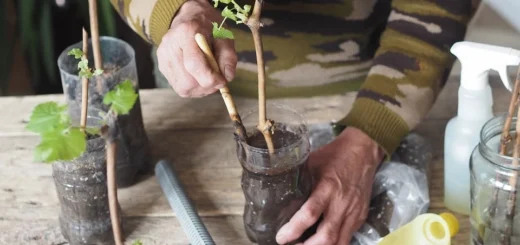










16 Responses
[…] How to plant grapes in autumn: planting instructions and care tips […]
[…] How to plant grapes in autumn: planting instructions and care tips […]
[…] How to plant grapes in autumn: planting instructions and care tips […]
[…] How to plant grapes in autumn: planting instructions and care tips […]
[…] How to plant grapes in autumn: planting instructions and care tips […]
[…] How to plant grapes in autumn: planting instructions and care tips […]
[…] How to plant grapes in autumn: planting instructions and care tips […]
[…] How to plant grapes in autumn: planting instructions and care tips […]
[…] How to plant grapes in autumn: planting instructions and care tips […]
[…] How to plant grapes in autumn: planting instructions and care tips […]
[…] How to plant grapes in autumn: planting instructions and care tips […]
[…] How to plant grapes in autumn: planting instructions and care tips […]
[…] How to plant grapes in autumn: planting instructions and care tips […]
[…] How to plant grapes in autumn: planting instructions and care tips […]
[…] How to plant grapes in autumn: planting instructions and care tips […]
[…] How to plant grapes in autumn: planting instructions and care tips […]